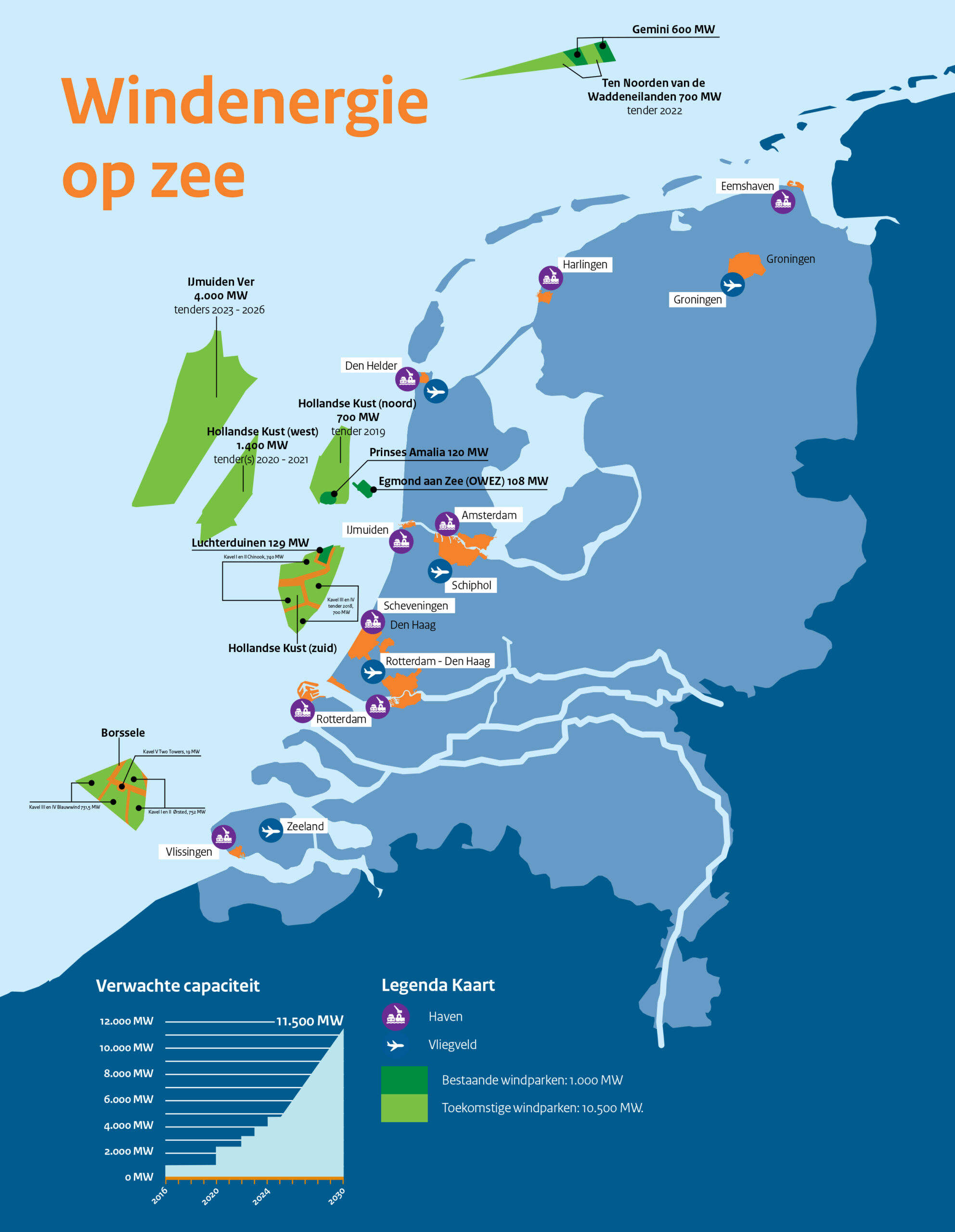
The closer a port is to an offshore wind project, the better it is for overall cost and efficiency, but only if the services, facilities, and logistical set up are right. Located for direct access to the North Sea and offering great logistics for offshore operations, Dutch ports and related maritime experience is proving critical in the drive to reduce offshore wind’s levelised cost of electricity significantly.
Overall, when it comes to meeting the logistical demands of today’s offshore wind sector, Dutch ports regularly outperform many other North Sea ports because of the significantly lower in- and outbound logistical costs: on average, one third of the costs of other European sites.
This is due to a number of factors:
All of the country's specialised offshore wind ports are deep-water, feature low tidal ranges, and have open access to inland areas.
As well as sufficient storage space and room for growth, they offer manufacturers the space to assemble large wind turbines efficiently and have first-rate infrastructure and facilities such as reinforced quays, heliports, and heavy mobile cranes, along with excellent transport links generally.
Some are dedicated O&M ports also, offering excellent pit-stop characteristics for efficient turnarounds.
The ports are home to research institutes, testing facilities, manufacturing and assembly plant, and strong networks along the entire supply chain.
Dedicated offshore wind hubs of excellence characterise Dutch ports. They can cope with today's larger vessels, turbines, foundations, blades, cabling and electrical equipment, and general handling and transhipment equipment. Modern methods such as roll-on roll-off solutions for turbine transportation are offered, widening the scope of transportation methods and vessels that can be used. Indeed, large heavy transport and crane vessels, cable laying vessels, seismic vessels, lift boats, wind turbine installation vessels, and more are catered for.
Finally, investment in new terminals dedicated to the sector are ongoing and planned to ensure future demand is met.
The Dutch Approach
Offering exceptional logistics and strong supply chain networks across both the energy and maritime industries, Dutch seaports border all offshore wind farms in operation, under construction, or under development in the United Kingdom, Belgium, Denmark, Germany and, of course, the Netherlands. All eight ports have a track record of serving the European offshore wind sector and all are expanding to meet future demand.
How can we help?
Get in touch with us! Are you interested to learn more about the Dutch Approach? Feel free to contact us and we are happy to tell you more!

